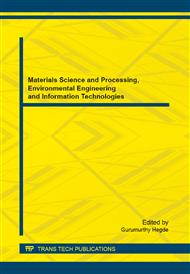p.597
p.601
p.607
p.611
p.615
p.619
p.623
p.629
p.635
Performance Improvement of Dye Sensitized Solar Cells by Using a Novel Operation Mode
Abstract:
A novel operation mode is proposed to enhance the photovoltaic performance of dye-sensitized solar cell (DSSC) by applying an external bias on the back electrode. The measured data shows that the photovoltaic conversion efficiency and open circuit voltage of DSSC are significantly improved by more than 38.8% and 5.8% under the stimulated AM 1.5 sunlight by using the biased operation mode compared to the conventional operation mode without an external bias applied. The improved photovoltaic performance could be attributed to the suppressed back reaction from the recombination between the photoelectrons produced from dyes and the I3- ions in electrolyte under the novel operation mode.
Info:
Periodical:
Pages:
615-618
Citation:
Online since:
October 2014
Authors:
Price:
Сopyright:
© 2014 Trans Tech Publications Ltd. All Rights Reserved
Share:
Citation:


